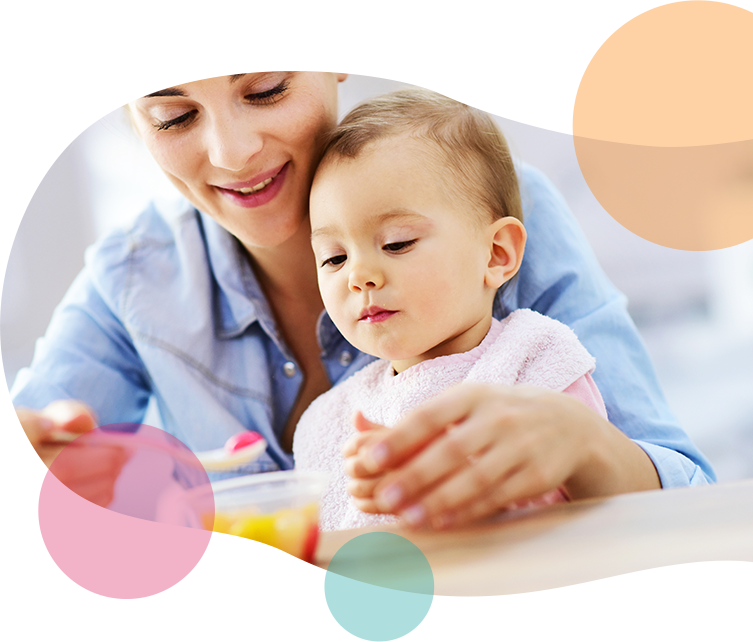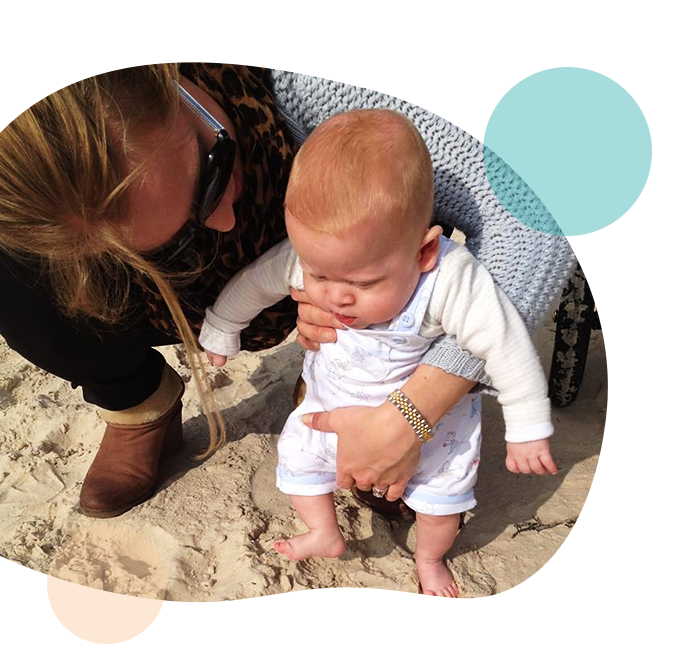Early life is when our brain’s development is particularly sensitive to the environments we encounter. We know that the sensory experiences provide by parents are particularly helpful and can mould the developing brain. Parents smell and touch can help a baby feel safe, parent’s faces and voices are especially interesting.Carrying, rocking and dancing with their baby helps them to experience movements in a safe and cocooned way.
United Approach: Sensory
We know that the sensory experiences provide by parents are particularly helpful and can mould the developing brain. A parent’s smell and touch can help a baby feel safe; parent’s faces and voices are especially interesting.
It is through our sensory systems that we learn about our body and the world outside. Development of our sensory systems begins in the early weeks of pregnancy. Even before birth, babies are gaining sensory experiences, from their movements in the womb and from hearing their parent’s voices.
Once babies are born they are surrounded by sights, sounds, touch, smells, tastes. They gather sensations from their bodies as they learn to move in the world and interact with the people, objects and environments around them. Sensations are like food for our brains and bodies; they are essential for our development. We put sensations together to understand about people and objects and environments, and what they mean to us; how they make us feel.

From the start our brain and body are constantly monitoring internal and external sensory cues for signals of comfort or discomfort /stress. Babies give out clues in their behaviours if they are aware that something doesn’t feel right. The sensation that they are hungry or wet or in pain will result in a baby crying or perhaps turning away.
We have eight sensory systems. Five are commonly known about: touch, vision, hearing, taste, smell. We also have sensory systems that tell us about movement and gravity, our vestibular sense; about movement of our muscles and joints, proprioception; and sensations from our inner body, interception. This sense enables us to know when we are hungry or uncomfortable.
Early life is when our brain’s development is particularly sensitive to the environments we encounter. We know that the sensory experiences provide by parents are particularly helpful and can mould the developing brain. A parent’s smell and touch can help a baby feel safe; parent’s faces and voices are especially interesting. Carrying, rocking and dancing with their baby helps them to experience movements in a safe and cocooned way.
From the start, our brain and body are constantly monitoring internal and external sensory cues for signals of comfort or discomfort / stress. Babies give out clues in their behaviours if they are aware that something doesn’t feel right. The sensation that they are hungry or wet or in pain will result in a baby crying, or perhaps turning away. When they have signals of comfort they will look at you and engage or be able to go down to sleep.
Relationships are built on the sending and receiving of sensory cues, visual, auditory, touch, smell and movement in synchrony with each other. Bonding is made up of sensory inputs from the parent to baby and back again. Sensations prompt our movements; for example, the baby may turn when touched, move towards a toy or smile at parents.

Why does EiSMART have a Sensory thread?
Early life is when neural development is particularly sensitive to environmental pressures. Out of sync, adverse, or absent sensory experiences can create stress in babies that can negatively impact developmental outcomes. By including sensory processing in the framework, EiSMART highlights the impact that sensations, or lack of sensations, experienced by a baby can have on subsequent development.
Sensory development is crucial to brain development by helping to build nerve connections that support language development, cognitive growth, fine and gross motor skills, problem solving skills, attachment, regulation, attention and social interaction.
Sensory development and motor development are intrinsically linked: sensory input prompt movement e.g. the infant may turn when touched; move towards a toy, or smile at parents. Movements in turn produce sensory information from the body and environment which is registered, interpreted, and builds meaning, action plans, and memories for future use. All of this happens through touching, tasting, smelling, seeing, moving and hearing.
Some preterm infants are at risk for abnormal sensory development. This is due to brain immaturity at birth and the type of sensory experiences in the Neonatal Intensive Care Unit. These can alter the development and functioning of the sensory systems.
Our brains are built to register, read, analyse and respond to the sensory information we gather from our internal and external worlds. Sensations build our brains. Providing the most supportive sensory experiences is the key to all therapeutic interventions.
How can parents apply the Sensory thread, to support their high risk infants?
Early life experiences, skin-skin contact, seeing parents’ faces, hearing their voices, and experiencing movement, all provide important positive sensory information that sculpts the developing brain.
Massage, auditory exposure, and skin-to-skin care are all positive sensory-based experiences that have been found to be related to better parent and infant outcomes.
The sensory activities chosen by parents and carers will allow young children to refine their thresholds for different sensory information, helping their brain to create stronger connections to process and respond to sensory information.
It is most helpful if parents, carers and those around the infant know how best to provide and modify sensory experiences so that they are appropriately timed, and of fitting complexity and intensity, to support the development of these skills.
Sensory play can help a child learn to adapt to different sensory inputs. For example some children who are fussy eaters may experience sensory challenges, particularly those born preterm. The use of carefully chosen sensory activities can assist the child in touching, smelling and adapting to the different textures in a play environment.
Research shows that sensory play builds nerve connections in the brain’s pathways, which lead to the child’s ability to complete more complex learning tasks.
The EiSMART approach helps parents learn about how the sensory experiences of touch, interaction, voice and movement, can help regulate their baby, buffer stress, and support attachment and development.